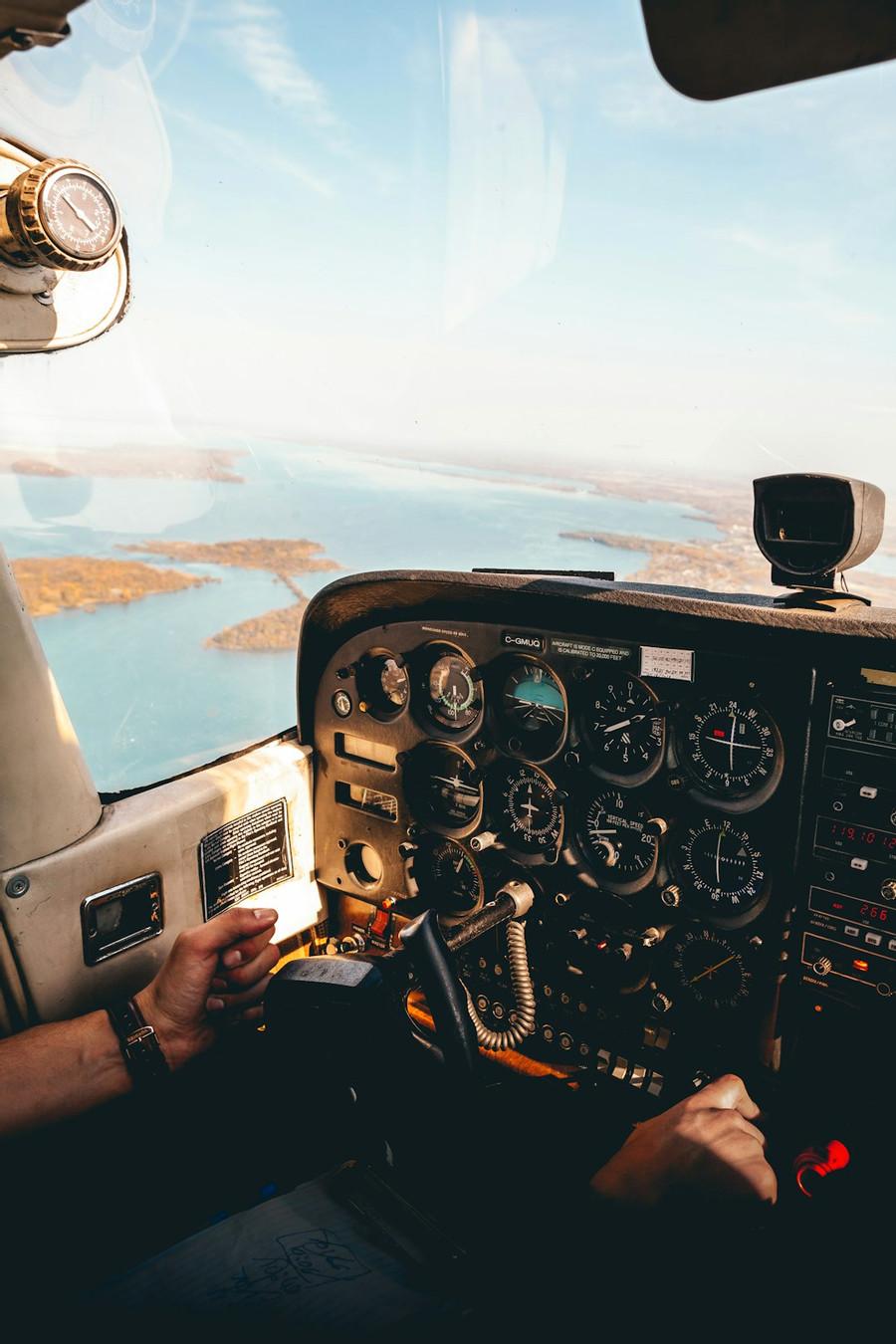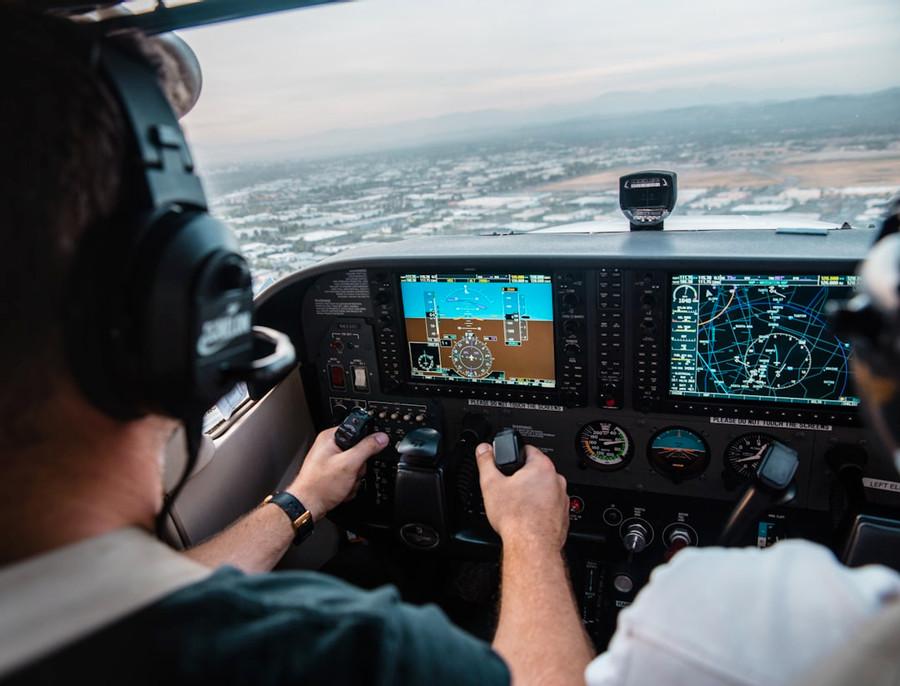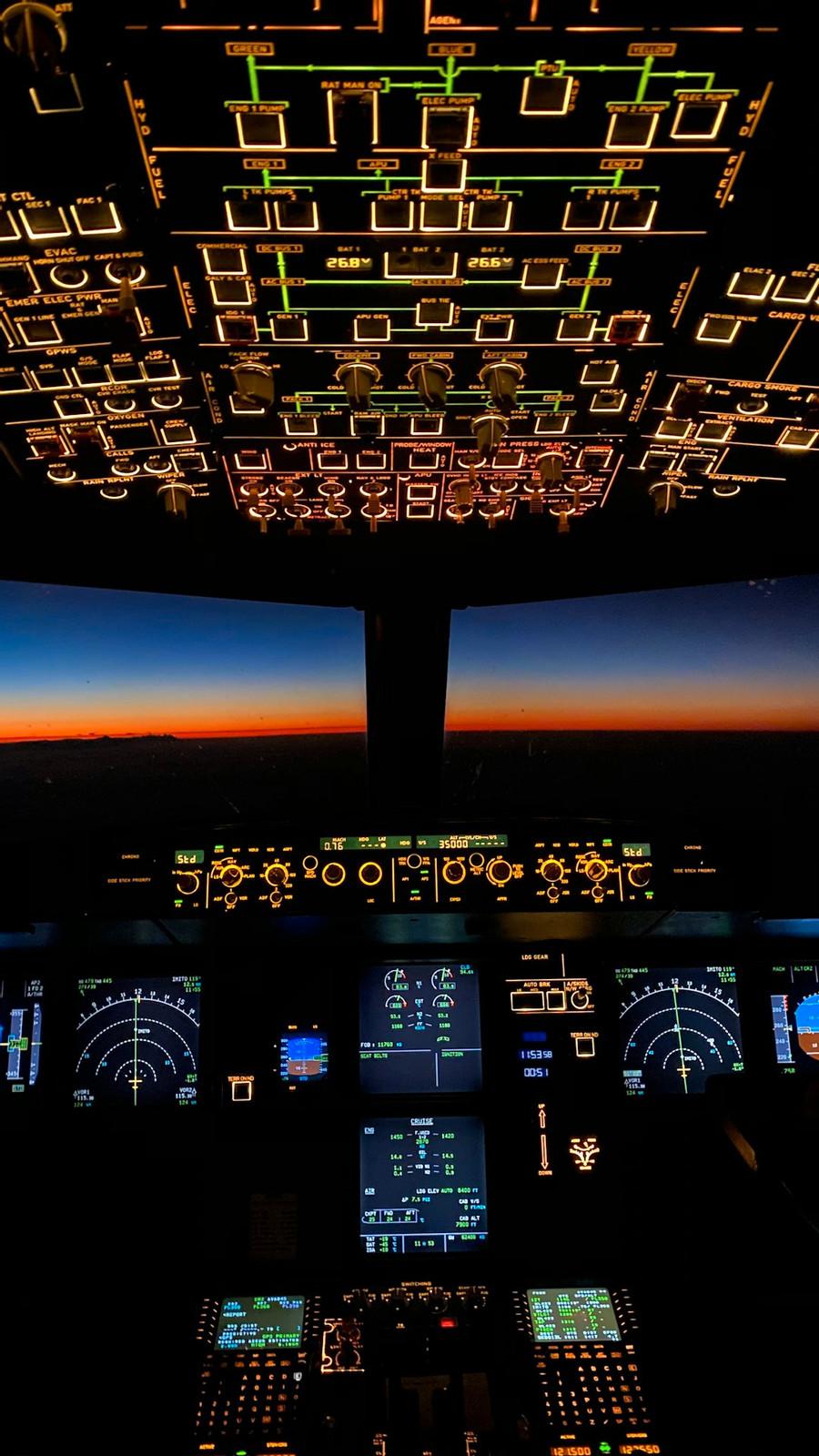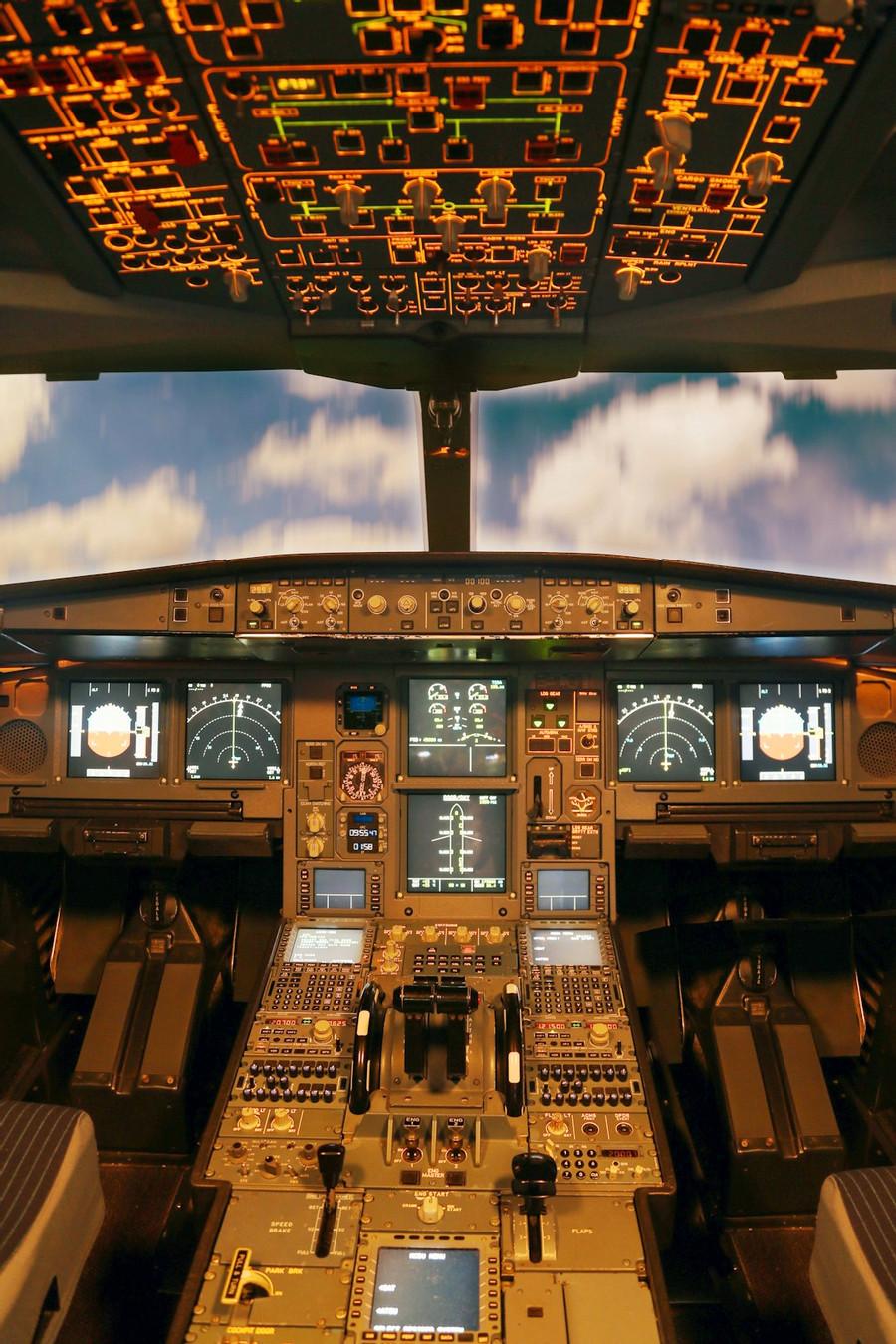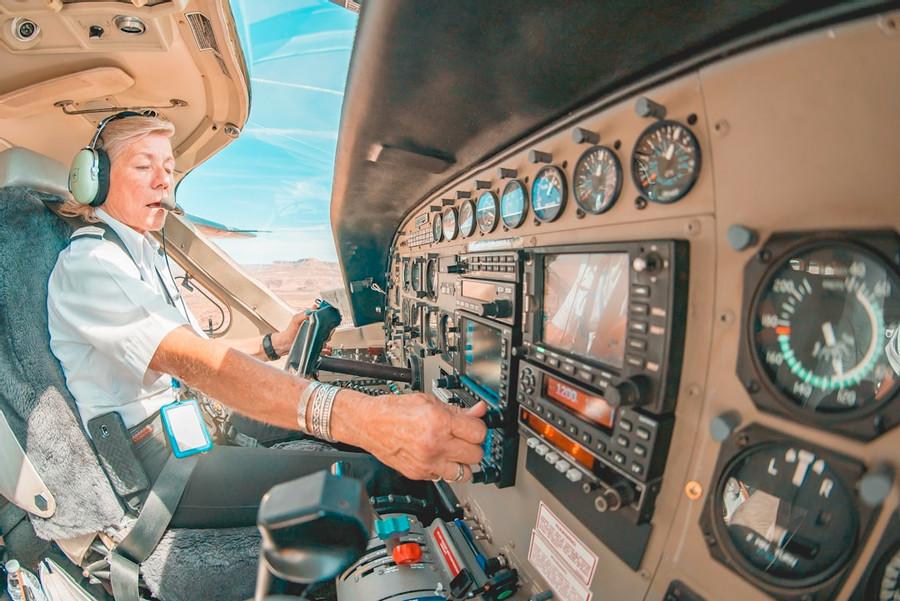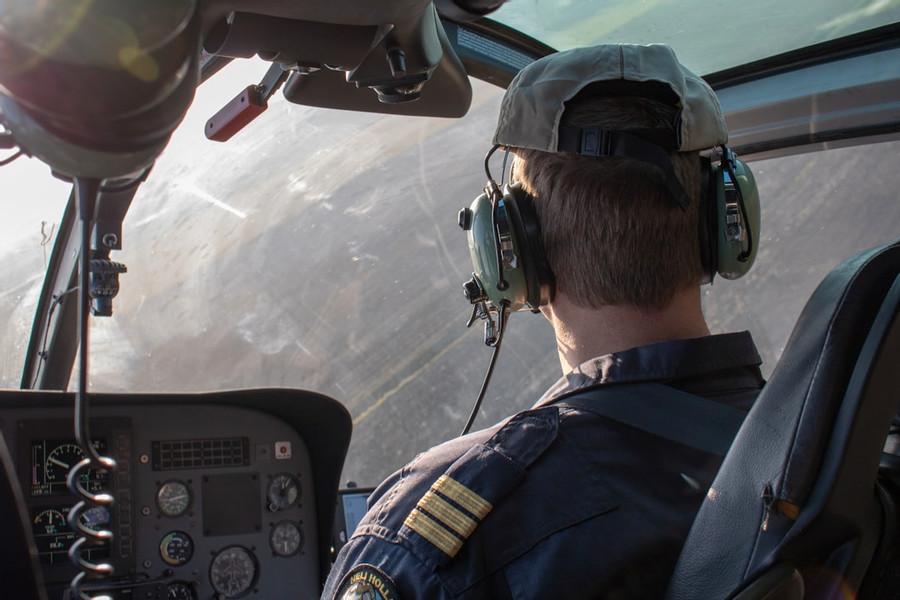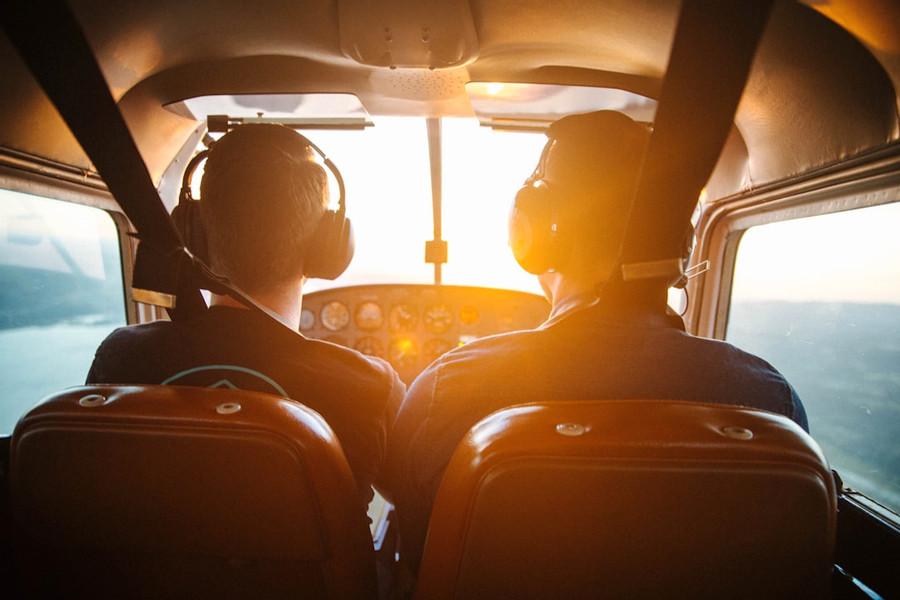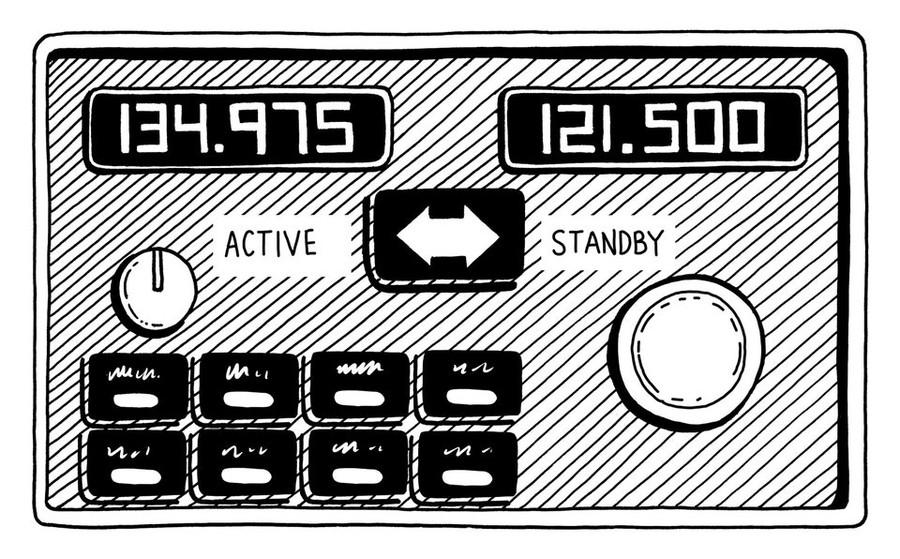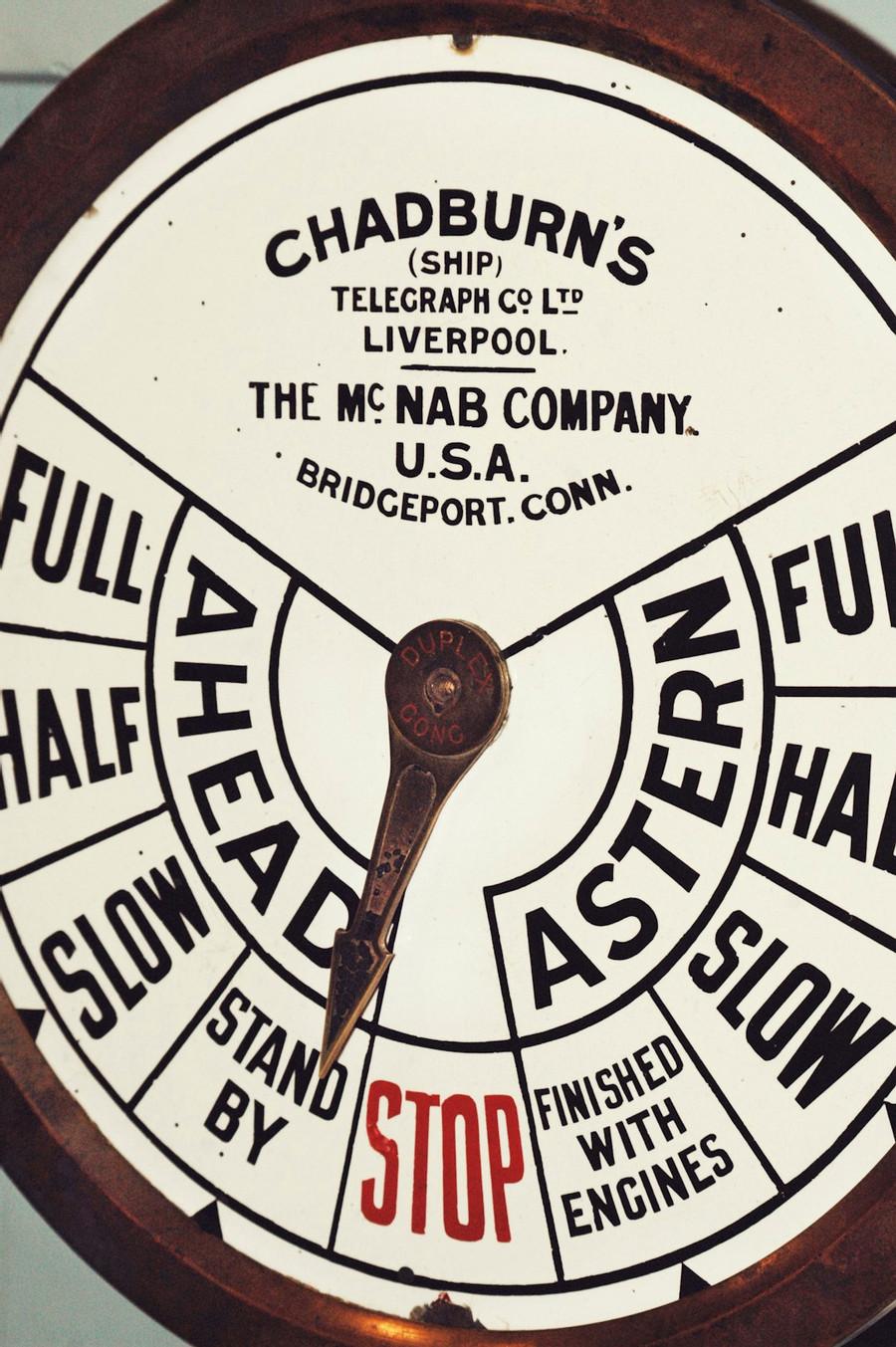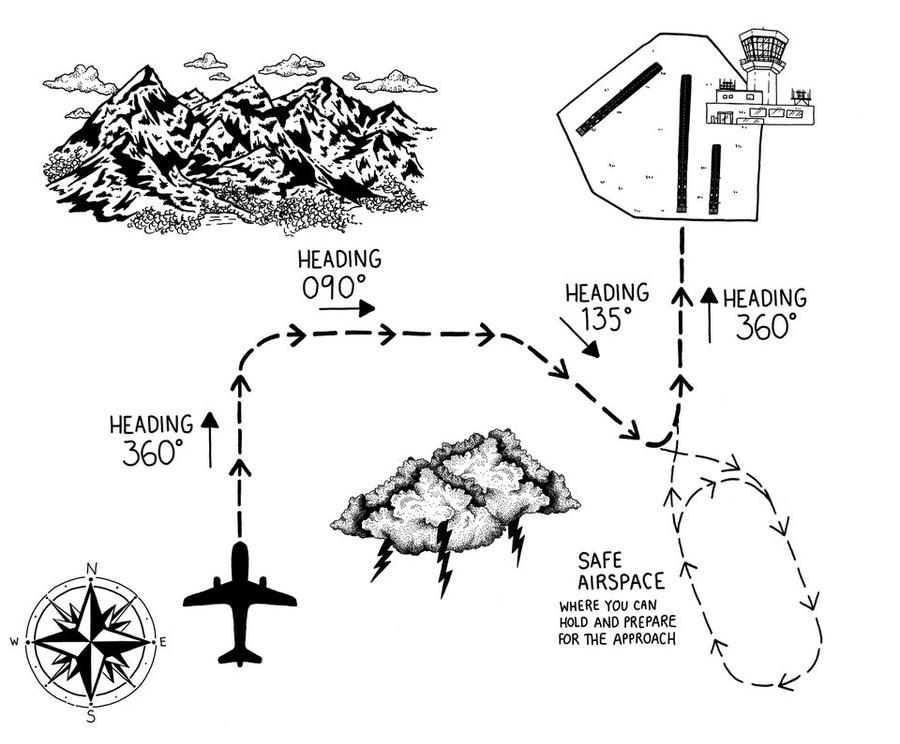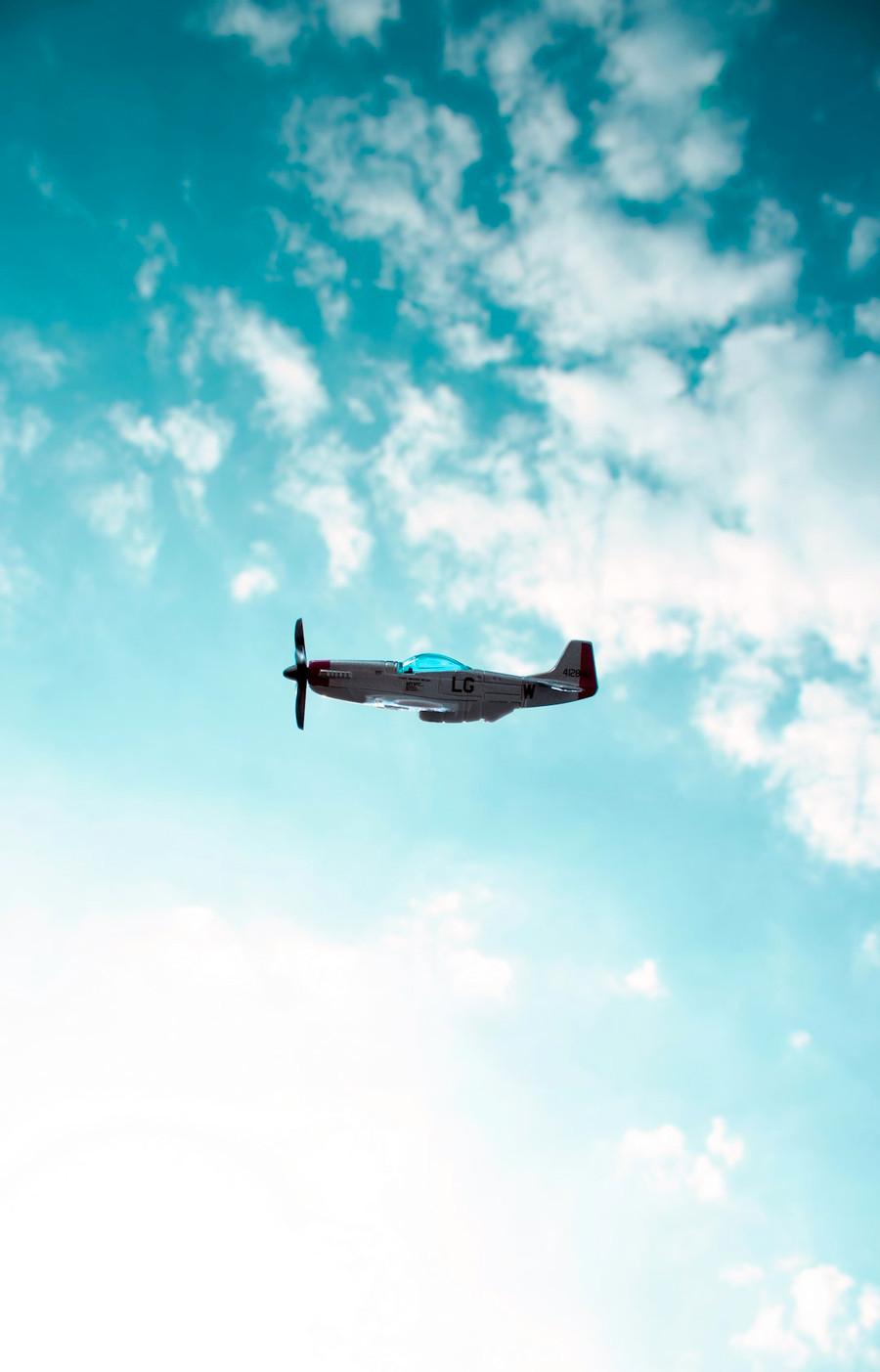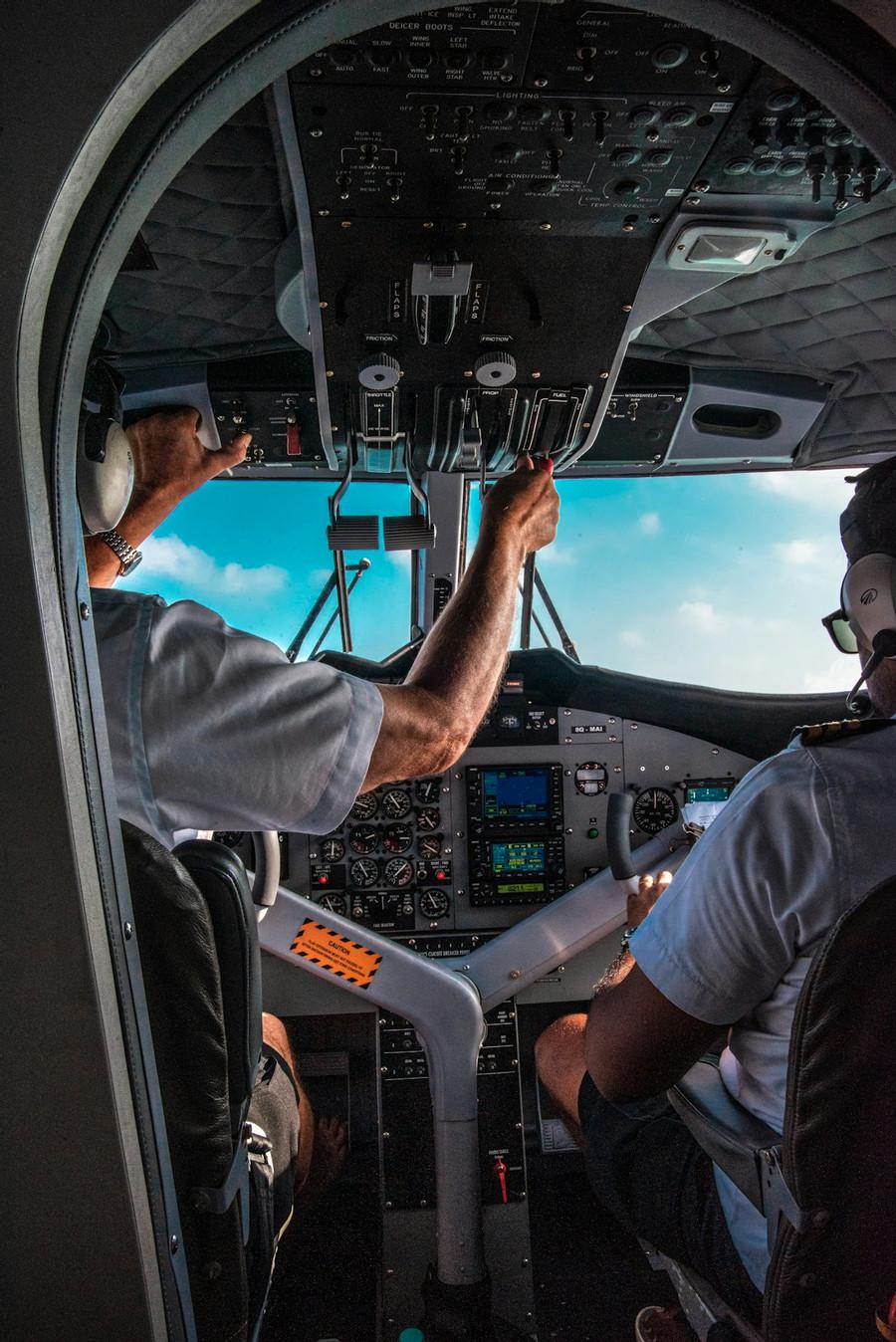Explore the World's Best Ideas
Join today and uncover 100+ curated journeys from 50+ topics. Unlock access to our mobile app with extensive features.
Up In The Sky With No Pilot
Let’s imagine you find yourself on an airplane, in the sky, without a pilot. You are in a non-normal situation.
A useful guide to your initial actions if you’re in such a pickle is a simple mnemonic called ANC: Aviate, Navigate, Communicate.
So, aviate. You need to keep the plane in the safe, stable flight you found it in.
11
115 reads
Get On The Steering Wheel!
Use the control wheel and the horizon displayed on the attitude indicator to level the wings. If it’s gin-clear outside and the real horizon is obvious to you, feel free to use it.
Next, take a look at the altimeter and the vertical speed indicator. Pick an altitude as your target—a simple number near your current altitude, like 10,000 or 15,000 feet. If you’re climbing away from your target, then very gently push the control column forward—that is, away from you—until you’ve stopped climbing.
11
90 reads
Picking A Speed After You Have Control On The Aircraft
If you’re descending, then pull the control column back, toward you, until you’re not descending anymore. Be gentle, as it’s easy to overcorrect.
Now, look at the airspeed indicator. Pick a target speed toward the higher end of the safe range. It’s impossible to give numbers for every airplane, but try 100 knots in a small plane, 250 knots in a small airliner, and 280 knots in something like a 747. If your speed is higher than your target, pull the throttles or thrust levers back slightly to reduce power. If it’s lower, then add power.
10
64 reads
Maintaining Being Alive
The goal is to reach an equilibrium in which your speed and altitude are safe and stable. Note the pitch attitude and power setting at which this occurs. The problem, as you’ll soon realize, is that the inputs required to correct one aspect of your flight path will almost certainly upset another one.
The best way to catch any unintended changes early is to move your eyes between the primary instruments in a consistent pattern. This pattern is called the scan, and scanning is something you have to constantly do.
9
44 reads
Trimming The Controls
Sometimes (Scan!) just (Scan!) maintaining (Scan!) level (Scan!) flight (Scan!) requires you to hold an awful lot of forward or backward force on the controls.
This brings up the important concept of trimming. Trimming, you might say, is a way of resetting the conditions under which the controls feel neutral. Or to put it another way, a perfectly trimmed plane would carry on doing what you want it to, even if you were to let go of the controls.
9
44 reads
How To Trim The Plane
Planes are typically trimmed by adjusting the positions of the panels and surfaces on the wings and tail that act on each of the three axes—roll, pitch, and yaw. Imagine an engine failure on a plane that has one engine under each wing. You’d need a lot of rudder input to keep the plane flying straight ahead as It’s tiring to hold that rudder position for a long time—and if you trim correctly, you won’t have to.
9
34 reads
Trim Wheel And Trim Switch
In routine flight, pilots most often trim in pitch, especially after a change of speed. Look for a trim wheel, or trim switches on the control wheel. If you find you have to hold a forward force on the controls to maintain level flight, slowly roll the wheel or switch forward until that force is no longer necessary. If you’re constantly pulling back, then trim backward.
9
24 reads
The Next Step: Safe Flight Path And Communication
Navigate a safe flight path (in relation to mountains, storms, air traffic zones, and other aircraft) and communicate with the folks who need to know what you’re doing, or who can help you to achieve a safe outcome.
For a trained pilot, navigation is a more immediate priority than communication (hence the order of the mnemonic, first A, then N, and last of all C). But for you the opposite is true, because unless you can see an airport right in front of you, you’re going to need outside help to remain clear of terrain and to find a runway.
9
20 reads
How To Talk In The Radio
Radios work like a party line. Everyone tuned in to a given frequency can hear what anyone else says, but only one person can speak at a time. It’s basically a giant conference call in the heavens, one that can be quite intimidating for new pilots.
To speak you need to press and hold a “Transmit” button, then release it when you’ve finished, just as you would on a walkie-talkie.
9
27 reads
Finding The Radio 'Transmit' Button
There’s probably a button or switch on the control wheel, often on the back. If you’re sitting on the left side of the cockpit then it’s likely to be under your left index finger, a carefully chosen position that allows you to speak on the radio without removing your hand from the controls. Some switches rock up to transmit, and down to speak via the intercom that goes straight into the other pilot’s headset.
9
22 reads
Talking On The Radio While Flying A Plane
You might also look for a “hand mic,” a microphone with a transmit button right on it. As you search for the transmit switch, keep in mind that on some control wheels and sidestick controllers there’s an autopilot disconnect button, often red, where your thumb might land. You do not want to press that.
A pilot transmission often follows a standard four-part format: whom you’re addressing; who you are, expressed as a call sign, or identifier, that’s absolutely unique to your aircraft or your flight; where you are; and what you want.
9
26 reads
Life-Saving Communication: Do It Right
Use your flight number or the aircraft registration (it will probably be on a placard in the cockpit).
Give your altitude and position—as best you know it—and a concise summary of your situation. Then release the transmit button (important!) and listen for a reply.
If you don’t hear one, transmit again. If you still don’t hear a reply, it’s time to change frequency. Look for the radio’s control panel (below), which will have multiple digital displays of numbers in a certain format—typically three digits, a decimal point, and then a few more digits, such as 134.975.
9
23 reads
What To Do In Case Of Radio Silence
If no one has responded to your initial call, the frequency to enter now is 121.500 MHz, the universal emergency frequency.
Select this in the standby field, then swap the standby frequency into the active field by pressing the bidirectional arrow button. Change the frequency on all the panels you can find. Also, press every radio panel button with a “1” or “L” on or near it, to make sure you’re transmitting via the correct radio, and not, for example, repeatedly making a PA (public address) to the cabin. Then transmit your call.
9
25 reads
Navigate The Plane
Now that you’ve established communications, it’s time to navigate. Ask the controller for a direction to fly in to keep you clear of terrain and perhaps also bad weather—in some parts of the world the controllers can see weather systems on their screens. When the controller decides that you need to turn, he or she will give you a heading (known as a “vector”), measured in degrees, such as 090 degrees for east. Look down at the heading indicator and then gently turn the control wheel in the desired direction. You don’t want to roll too steeply.
9
16 reads
Pulling The Aircraft
As you roll, you’ll need to pull back on the control column a little and probably add power too. That’s because some of the lift that was keeping you in level flight is now being deployed “sideways” to turn you. If you don’t create more lift, you’ll start to descend. Pulling back creates that lift (and the more steeply you bank, the more you need to pull). But it also creates more drag, so you’ll need more power to maintain your speed. And so it goes on. That’s why the scan is so important.
9
18 reads
Breathe Again
Now you know how to keep the aircraft flying—to aviate. The controller you’re in communication with is helping you to navigate. In fact, you’ve earned a pause for another cup of tea (but actually, keep on scanning). Nor should you miss the chance to have a little fun (the technical aviation term for “fun,” by the way, is “familiarizing yourself with the feel of the airplane”). Try some gentle turns or climbs or, for extra points, combine them in a climbing turn. Enjoy!
9
26 reads
IDEAS CURATED BY
CURATOR'S NOTE
Up in the sky in the cockpit with no pilot.
“
Vera D.'s ideas are part of this journey:
Learn more about personaldevelopment with this collection
How to set clear objectives
How to follow up after a meeting
How to manage time effectively
Related collections
Similar ideas
5 ideas
Your Pilot Isn't Actually Flying Your Plane
cntraveler.com
4 ideas
3 ideas
3 Things Pilots Know About Crisis Management
fastcompany.com
Read & Learn
20x Faster
without
deepstash
with
deepstash
with
deepstash
Personalized microlearning
—
100+ Learning Journeys
—
Access to 200,000+ ideas
—
Access to the mobile app
—
Unlimited idea saving
—
—
Unlimited history
—
—
Unlimited listening to ideas
—
—
Downloading & offline access
—
—
Supercharge your mind with one idea per day
Enter your email and spend 1 minute every day to learn something new.
I agree to receive email updates

